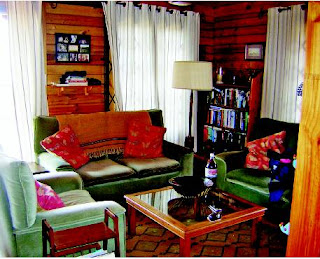Twenty five years ago in 1991, India launched iconic economic reforms that were considered a game-changer for the country. Just prior to 1991, India was growing at around 5% annually - emerging from years of mere 3% growth, cynically referred to as Hindu-rate-of-growth. In the late 1980s, the government's profligacy had resulted in large fiscal deficit. International debts were rising as well. However, nobody bothered as the economy was chugging along at a decent pace.
The first Gulf war of 1990-91 changed the status quo. Political scenario had also changed. In June, 1991, the Congress had formed the new government under the leadership of P V Narasimha Rao. At that time, the primary source of foreign inflows for India was money remitted by the Indian workers based in West Asia. The Gulf war pushed up the price of oil and at the same time, foreign exchange inflows sharply declined as workers in the region lost their jobs. The new government found that it had just enough foreign exchange to pay for only 13 days of country's imports.
The combination of large fiscal deficit, widening current account deficit along with depleting foreign exchange reserves was the perfect recipe for a critical crisis. International confidence in India's ability to pay was so low that New Delhi had to transport its gold reserve to London as a collateral for aid from International Monetary Fund (IMF). The event is still embedded in Indian psyche as the most humiliating event in its history. This move, though politically very unpopular, gave some breathing space for the government to embark on serious structural reforms.
Rao appointed Manmohan Singh as fin-ance minister while he kept the portfolio of industry with himself. The government used this window of opportunity to clean up the system which did not actually result in the crisis but required cleaning up urgently. India needed a paradigm shift in its developmental model. The Nehruvian inward-looking socialistic model with restrictions on production and imports was showing its fault lines under the pressure of growing population with surplus unskilled labour.
The most iconic reform announced in the first budget itself was the removal of the notorious licence system. The 'licence-raj' required anyone who wanted to start a new industry or expand production or import inputs had to get a licence from the government to do so. This had increased bureaucratic red-tape and bred corruption.
Jettisoning the 'license-raj' was major part of the reform package. Next, Singh addressed reforms in trade and investments. The peak import duty was reduced from 400 to 150% in 1991 and thereafter reduced slowly to 15% by 2005. Foreign investment was liberalised in stages and imports of technology were freed.
India's foreign exchange was so meagre that it was virtually impossible to take dollars out of the country. The government opened up foreign exchange flows. These were major big-bang reforms since India's independence in 1947. In July 1991, Manmohan Singh ended his famous budget speech with a quote of Victor Hugo, "no power on earth can stop an idea whose time has come".
However, in a democracy, as noisy as India, an idea is not enough without wider political support. Critics were quick to warn that India would suffer a 'lost decade' following the mandate of IMF. Fiscal tightening will kill growth, increase unemployment, opening up of the economy will destroy domestic industry and free movement of foreign exchange will deplete our reserves. However, the government managed to pull this through.
Looking back, it is easy to see that India, instead of suffering a lost decade, turned itself around. Growth soon picked up to 7%, businesses remained competitive and turn-ed multinational, foreign reserves increased. Even though manufacturing sector continued to struggle, easing up on import restrictions and tariffs helped the services sector to take off. Capital-starved economy welcomed the entry of foreign institutional investors. Private banks and airlines emerged. In television, monopoly of the Doordarshan was replaced by several private channels.
Fastest growing
The momentum of these reforms helped India join the club of a few fastest growing major economies after 2005. Reduction of income tax, introduction of VAT, Fiscal Responsibility and Budget Management Act, disinvestment policy, planning of golden quadrilateral, introduction of government schemes like Gram Sadak Yojana and MNREGA (Rural Employment Scheme), Aadhaar and Direct Benefit Transfer are some major reforms implemented since 1991.
In 1991, India was a poor developing country, a member of the G77 group. In 2016, India is the fastest growing major economy and a bright spot in the world. It is now a member of the G20, the most-powerful countries in the world. Its per capita income has shot up from $300 in 1991 to $1,700; share of the population living in poverty has halved; literacy rate has improved by 22% and foreign reserves from $5 billion to $360 bn.
In 1991, India used to meet its financial needs through foreign aids and loans. It is now as much a donor as recipient and meets its financing needs on commercial terms. Foreign direct investment last year was record high at $44.9 bn. Indian consumers now have unlimited choices as against few available in the closed economy of 1991.
However, many chinks in its armour had emerged in recent years. From crony capitalism to corruption, massive leakages in welfare schemes, failing education and health system, rise of unskilled labour - problems were many.
The NDA government has been successful in bringing several incremental reforms since 2014. Urgent reforms in education and skill development are needed to harness demographic dividend. Big bang reforms like the GST, land acquisition and labour laws are still awaited. As we celebrate 25 ye-ars of 1991 reforms, there is a need for next iconic 'Reforms 2.0' for India to take off.
FOR MORE












